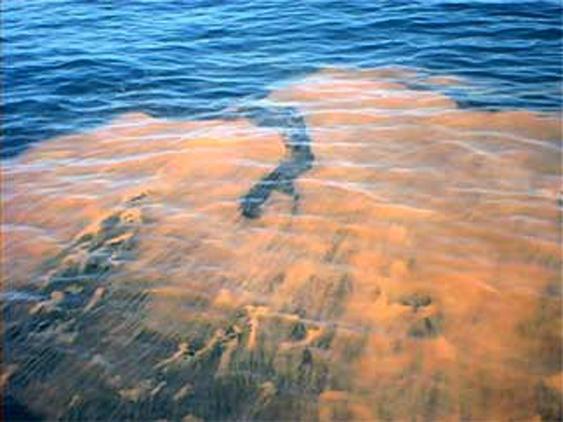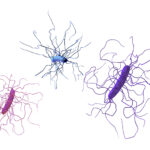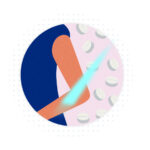With algae blooms hope for a long-acting local anesthetic

For decades, Chile’s shoreline has had problems with periodic algal blooms – referred to as Red Tide, but actually containing a mix of microorganisms including bluegreen algae. Their toxins accumulate in shellfish, landing seafood consumers in the hospital, partially paralyzed, sometimes needing ventilators to breathe.
The nerve block caused by the toxins is reversible, so most people fully recover, but it’s led to repeated bans on shellfish harvest, consumption and sale. Out of public health and economic concerns, Chilean scientists have built up an expertise in monitoring coastal waters and isolating and purifying the toxins.
But some scientists, like Alberto Rodríguez-Navarro, also a physician at Padre Hurtado Hospital in Santiago, saw pharmacologic potential. “We wondered what we could do with these compounds,” he says. The toxins – including tetrodotoxin and saxitoxin – act on cellular sodium channels, which play an important role in pain sensation. The doses people were receiving from shellfish were sky-high, but could smaller doses possibly be used in surgery, as a local anesthetic?
It wouldn’t be the first time doctors found therapeutic uses for compounds that are toxic in large amounts – consider cancer chemotherapy, digitalis and botox.
In 2007, Rodríguez-Navarro and colleagues published the first clinical study of neosaxitoxin (a saxotoxin derivative) in 10 healthy volunteers. Injected under the skin, a very small dose – 50 micrograms – completely blocked pain with no adverse effects.
This report – appearing in the leading journal Anesthesiology — greatly interested Charles Berde, chief of the Division of Pain Medicine at Children’s Hospital Boston. He wanted a local anesthetic that would last longer than 8 hours, so that his patients would have less need for systemic analgesics (opiates) once it wore off. For more than a decade, he and Daniel Kohane, a clinician-researcher in Critical Care Medicine at Children’s, had been studying site 1 sodium-channel blockers derived from marine toxins, showing in rats that they lack the side effects of existing local anesthetics and opioid analgesics.
Back in Chile, Rodríguez-Navarro had been following this work, too. Two years ago, he and Berde met in North Carolina and decided to team up to try to develop neosaxitoxin as an anesthetic, and to conduct further human trials to define the optimal dose.
Together, they conducted a randomized controlled trial in 137 Chilean patients having laparoscopic removal of their gall bladders, to appear in the March/April issue of Regional Anesthesia and Pain Medicine. Patients in the neosaxitoxin group, receiving 100 micrograms this time, had significantly less pain and fully recovered function about 2 days earlier than those given the commonly used local anesthetic bupivacaine, with no significant adverse reactions.
Rodríguez-Navarro helped form a new biotech startup company, Proteus SA, with expertise in analytical chemistry and purification. Proteus and Children’s recently signed a collaboration agreement.
Neosaxitoxin, the first drug ever developed in Chile from scratch, could fill a huge unmet need in medicine. Current local anesthetics last no more than 8 hours, requiring patients to then take systemic opiate analgesics that can cause nausea, sedation, shallow breathing, sleepiness, constipation and itching, and that prolong their time in the hospital.
Combined with existing local anesthetics, neosaxitoxin in rat models has blocked pain for up to 2 to 4 days. Proteus’s CEO, Luis Novoa, estimates that the worldwide market could top $1 billion.
“In my opinion, there has not been a truly innovative new local anesthetic medication in the last 40 to 50 years,” Berde says. “There have been candidate drugs that went in novel directions, but they’ve had shortcomings, and none have made it to market.”
Related Posts :
-

The people and advancements behind 75 years of Boston Children’s Cardiology
Boston Children’s Department of Cardiology has more than 100 pediatric and adult cardiologists, over 40 clinical fellows learning the ...
-

The journey to a treatment for hereditary spastic paraplegia
In 2016, Darius Ebrahimi-Fakhari, MD, PhD, a neurology fellow at Boston Children’s Hospital, met two little girls with spasticity and ...
-

Could a GI bug’s toxin curb hard-to-treat breast cancer?
Clostridium difficile can cause devastating inflammatory gastrointestinal infections, with much of the damage inflicted by a toxin the bug produces. ...
-

Naloxone on demand: Shining a light to reverse opioid overdose
Overdose deaths from fentanyl and other opioids are at record highs in the U.S. Naloxone, if delivered soon after ...





